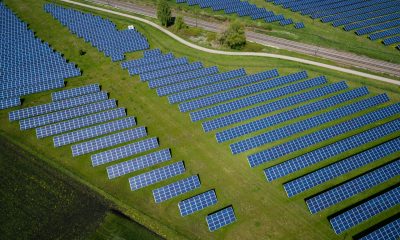Featured
Socially responsible investing continues to grow in demand
Today’s investment strategies have been taking environmental, social and governance ideals into consideration in addition to gaining profits.

The world is slowly moving from traditional investments which do not factor in environmental, social and governance ideals. This paradigm shift has been motivated by the need to protect the above three factors for the benefit of both the present and future generations while still generating profit. This is also known as socially responsible investing.
Millennials have been at the forefront of promoting socially responsible investments or impact investments, thanks to their desire to invest in areas in line with their personal values. This demographic’s advantages are in their large population, inheritable wealth and choice of digital communication channels that will enable them to continue disrupting the industry.
The rising demand for socially minded investments has kept fund managers on their toes, with each of them striving to develop products aligned to this emerging segment.
The need to have this kind of approach inspired the rise of the Environmental, Social and Governance index (ESG), which was developed by S&P 500 index fund.
The ESG index still covers the larger index but keeps an eye on companies that are not environmentally and socially responsible. ESG index seems to be the best option for keeping a socially minded focus.
People who believe in the ideals of ESG go for companies, organizations, and funds that aim to have a tangible social and environmental impact while generating financial returns. This provides a win-win situation to the investor, the company and their causes.
Impact investing covers various sectors, including renewable energy, climate change, health, safety, community development, among others.
Environmental, social and governance factors
Environmental factors include:
- Climate change, including physical and transition risk
- Depletion of resources
- Waste, pollution, and deforestation
Social factors include:
- Employee relations and diversity
- Health and safety of workers
- Working conditions
- Slavery and child labor
- Conflict
- Surrounding communities, including indigenous ones
Governance factors include:
- Board diversity and structure
- Executive pay
- Tax strategy
- Corruption and bribery
- Political lobbying and donations
The future for sustainable investing is bright

According to a 2014 report by the Forum for Sustainable and Responsible Investments, “sustainable investing has been growing at a compound annual growth rate of 107.4 percent. Increasing assets under management (AUM) from $1 trillion in 2012 to $4.3 trillion in 2014.” On the other hand, there’s now three times the number of sustainable investing funds since 11 years ago.
While millennials are a huge factor in the market growth of responsible investing, various developing macro-economic trends have also played a part in the boom.
With the growing global population, the future for socially responsible investing can only be brighter.
It is estimated that in 31 years, our current global population will increase by 2 billion. That means that the demand for food, water, and energy will inevitably also expand, pushing for more innovative improvements in infrastructure to meet the needs of the growing population.
The future demand for clean water, energy, improved health care, and good transport networks is creating numerous opportunities for responsible investing segment.

-

 Africa2 weeks ago
Africa2 weeks agoMorocco Allocates 1.3 Billion Dirhams to Boost Startup Ecosystem Under Digital 2030 Strategy
-

 Crypto1 week ago
Crypto1 week agoAAVE Community Challenges Aave Labs Over Governance and Control
-

 Crowdfunding5 days ago
Crowdfunding5 days agoDeep Learning Italia Launches €400K Crowdfunding to Bridge Italy’s Tech Skills Gap
-

 Biotech2 weeks ago
Biotech2 weeks agoSpain Joins First EU Joint Clinical Assessment Under New Health Technology Regulation

























